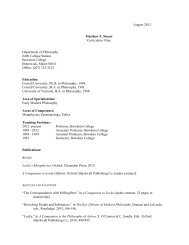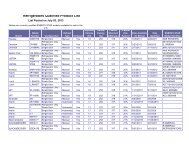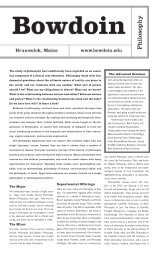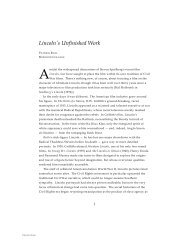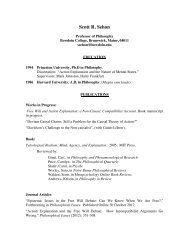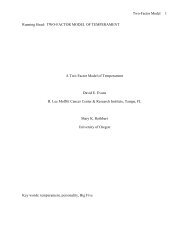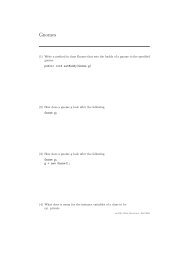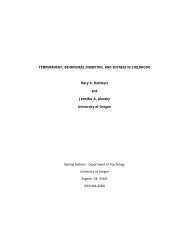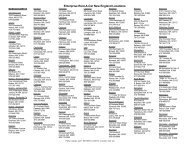You also want an ePaper? Increase the reach of your titles
YUMPU automatically turns print PDFs into web optimized ePapers that Google loves.
It is often desirable to use a compound standard together with several additional pure<br />
element standards. Of course, the same analytical conditions must apply to the pure element<br />
standards as well as to the compound standard (same analytical geometry, same beam<br />
current, voltage, etc.). In the example below, we will use one of the samples from the<br />
previous exercise (“alloy15a.spc”) as a compound standard. Just as in the case above, we<br />
should first verify that the parameters for our pure element intensity table is correct by<br />
clicking on “Stds” and “Pure”, then clicking on “Factors” and verify that the detector type,<br />
method and voltage are all correct.<br />
-the “Quantify” control panel should be made active if it is not already active.<br />
-[Stds]<br />
-[Options]<br />
-[Compound]<br />
-[Setup]<br />
-Type the percentage for each element followed by an<br />
“enter” (3.0, 38.5 and 58.5 for the Al, Cr, and Ni, respectively)<br />
-[RZAF] (calculated pure element intensities will be listed<br />
in the dialog box)<br />
-In this case, you should leave the “Use as compound”<br />
checkbox unchecked<br />
-[OK]<br />
-[Save]<br />
[Yes]<br />
-[OK]<br />
At this point, the calculated pure element intensities will be listed in the pure element table and<br />
the standards type will be listed as “pure”. This standards file could be saved as in the case<br />
above by clicking on “File” and “Save as…”, select the STD file type and give the file a name<br />
followed by an “Enter”. If another pure element standard were available (Mn or Fe for instance),<br />
it would be possible to add them to our table by following the procedure above ([Stds],<br />
[Options], [Pure], [Setup], [Save], [Yes], [OK]).<br />
Using this procedure it is possible to merge data from multiple pure element spectra and a pure<br />
element standard. It is even possible to use multiple compound standards. It may be a good<br />
ideal to take some notes of the pure element intensities calculated for each standard because it<br />
is likely that an element might be present in more than one standard. The table will record the<br />
last standard value that was saved and it might be best to use one of the previous values or an<br />
average of several standards. The pure element intensity values that can be viewed by clicking<br />
on “Factors” may also be edited to reflect your choice.<br />
<strong>EDAX</strong> Training Course --Analysis with Pure Element Standards - page 3




